Rubik 3x3x3 Void Cube
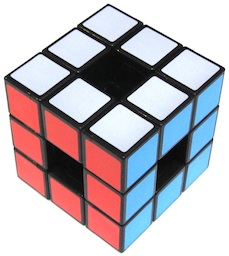
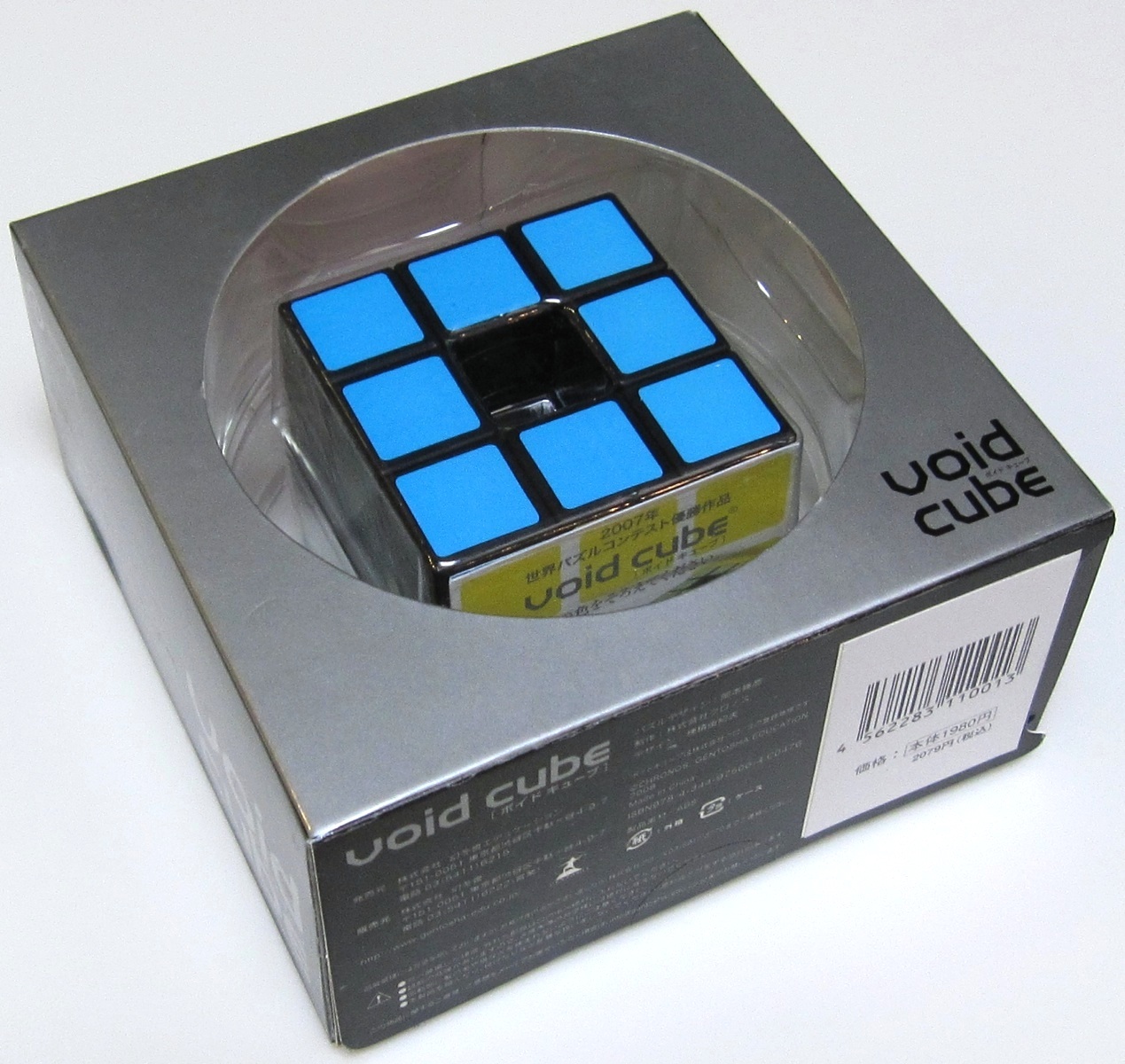
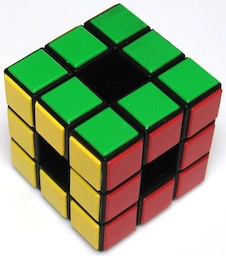
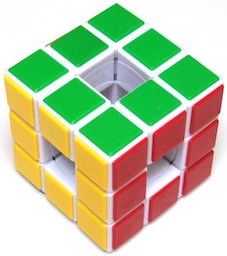
a.k.a. Holey Cube
Designed by Katsuhiko Okamoto 2007,
top by Gentousha 2009 and uses stickers,
bottom two purchased from CubeFans 2009 and are all plastic.
(plastic, 2.25 inches;
top: gray opposite black, red opposite yellow, blue opposite light green;
bottom: green opposite blue, yellow opposite white, red opposite orange)
By the designer of the
Rubik 1x3x3 Floppy Cube.
Logically the same as the classic
Rubik's 3x3x3 Cube,
but mechanically very different.
The standard Rubik's 3x3x3 cube relies on central 3D axes to which the centers are attached and the other pieces flow around.
Here,
one can look through the center of the cube along any of the three axes
(i.e., a square bar with a 1x1 unit cross section can be passed through the cube in any of the three directions).
Solving is the same as the standard version, except for the void cube parity issue,
described on the following page.
Void Cube Parity Problem
In a standard
Rubik's 3x3x3 Cube,
not all possible positions are reachable by mixing up the puzzle.
For example,
it is not possible to end up with the cube solved,
except for two adjacent corners exchanged.
Note that this fact is not at odds with such a situation being possible for the
Rubik's 2x2x2 Cube,
which has no middle layers.
For example,
cycling the UFL, UBL, UBR corners counterclockwise followed by rotating the up layer 90 degrees clockwise
results in the UFL and UBL corners being exchanged and the remainder of the 2x2x2 cube unchanged,
but for the 3x3x3 cube this would leave the edges of the up layer disturbed.
The
void cube parity problem
is when the puzzle is almost solved in an apparently impossible position.
For example,
using the simple layer at a time solution,
as was presented for the standard Rubik's 3x3x3 cube,
you may get stuck at the end with something like this:
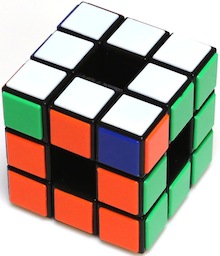
Such a configuration corresponds to a standard Rubik's 3x3xx3 cube where in addition to the two exchanged corners,
some center squares are mixed up as well.
Other solution approaches could result in impossible configurations of the edges.
With the void cube,
there are no middle tiles to get mixed up,
and some impossible positions for the standard 3x3x3 cube are now possible.
Rather that mix up up the puzzle and try again,
there are many ways that have been published for fixing the problem.
But without having to remember something new,
a simple approach is to try to solve using whatever method you use for the standard cube,
and if it works fine (you lucked out and got the right mode of parity),
and if not,
go back to a place where you can make a move that will change parity with respect to the center squares and resolve from that point forward.
When using the basic 6-step layer by layer solution for Rubik's 3x3x3,
one can just solve as usual, hoping things will work,
and if not,
rotate the middle layer 90 degrees,
and then resolve from that point on.
When using a corners first solution,
at the last phase that solves the middle,
the same sequences can be used, possibly preceded with an additional 90 degree rotation of the middle layer.




